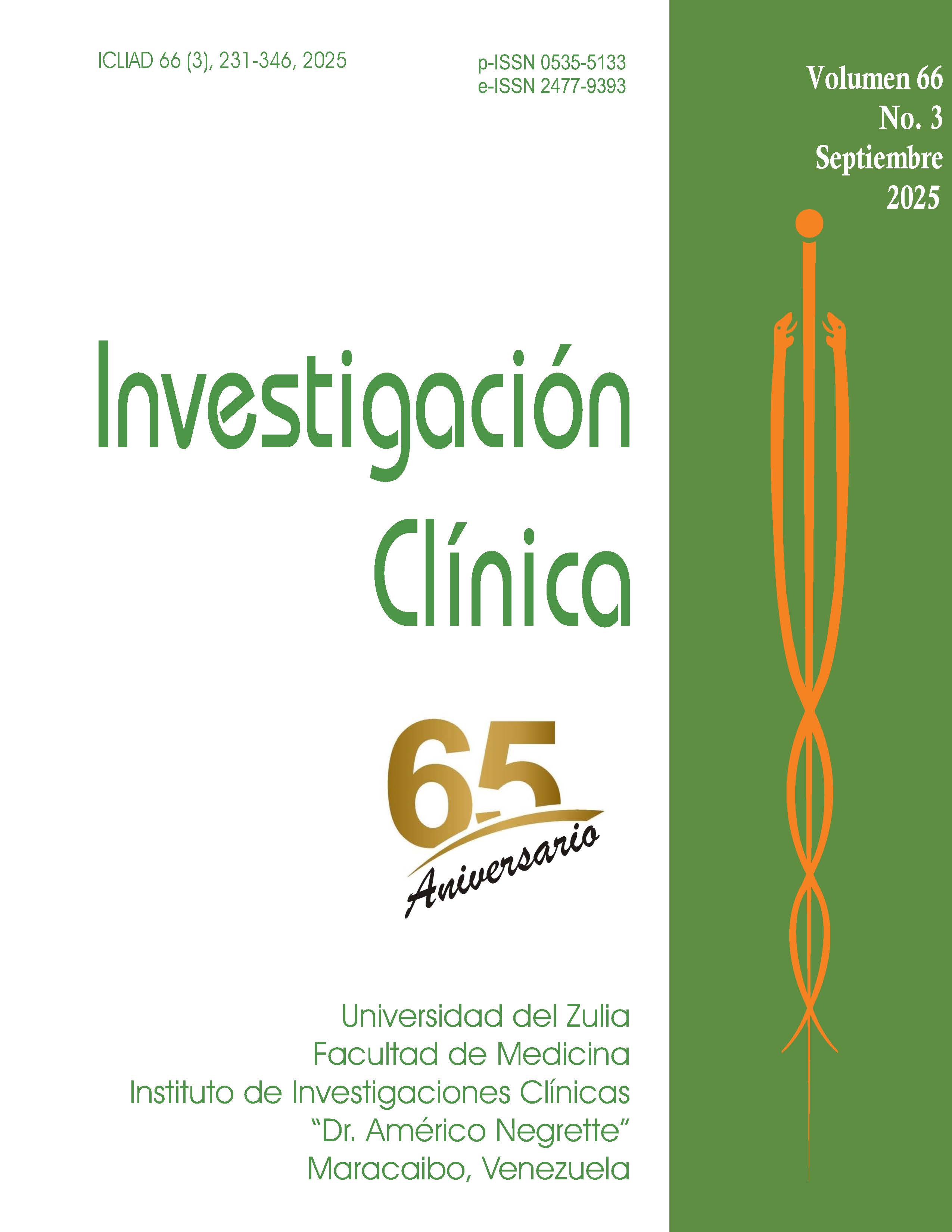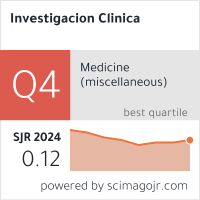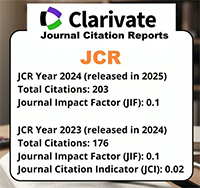Novedosos agentes dopaminérgicos y serotoninérgicos derivados del quinolinmetiladamantano y amino-metiladamantano. Síntesis y perfil farmacológico.
Novel dopaminergic and serotoninergic derivative agents from quinoline-methyladamantane and amino-methyladamantane. Synthesis and pharmacological profile.
Resumen
La serotonina (5-HT) y la dopamina (DA) son neurotransmisores claves en el sistema nervioso central (SNC) que participan en la regulación del comportamiento. La disfunción de las vías de neurotransmisión dopaminérgica y serotoninérgica, que son responsables de la regulación del estado de ánimo, la cognición y el movimiento, puede provocar una amplia gama de trastornos cerebrales, tanto neurológicos como psiquiátricos. La DA está implicada en diversas enfermedades neurodegenerativas y neuropsiquiátricas y se conoce que los sistemas dopaminérgicos en el cerebro reciben inervación serotoninérgica. En el presente estudio se presenta la síntesis y la evaluación farmacológica preli- minar de los compuestos N-[(2-cloro-quinolin-3-il)metil]-metiladamantano (7) y amino-metiladamantano (10), que resultaron tener actividades dopaminérgicas y serotoninérgicas en el sistema nervioso central. La estrategia utilizada en el diseño del compuesto híbrido 7 permitió obtener un novedoso agente con actividad antipsicótica y/o ansiolítica. El compuesto 10 sólo mostró actividad antiparkinsoniana. Estos compuestos constituyen un aporte al arsenal farmacológico para el tratamiento de patologías relacionadas con las enfermedades neurodegenerativas y neuropsiquiátricas.
Descargas
Citas
Ben-Sachar D, Zuk R, Gazawi H, Ljubuncic P. Dopamine toxicity involves mitochondrial complex I inhibition: implications to dopamine-related neuropsychiatric disorders. Biochem Pharmacol 2004; 67(10): 1965-1974. https://doi.org/10.1016/j.bcp. 2004. 02.015
Zhang A, Neumeyer J, Baldessarini R. Recent Progress in Development of Dopamine Receptor Subtype-Selective Agents: PotentialTherapeutics for Neurological and Psychiatric Disorders. Chem Rev 2007; 107(1): 274302. https://doi.org/10.1021/cr050263h
Long JP, Heintz S, Cannon JG, Kim J. Inhibition of the sympathetic nervous system by 5,6-dihydroxy-2- dimethylaminotetralin (M-7), apomorphine and dopamine. J Pharmacol Exp Ther 1975; 192(2): 336-342. PMID: 1117421.
Huang Y, Luedtke R, Freeman R, Wu L, Mach R. Synthesis and Structure-Activity Relationships of Naphthamides as Dopamine D3 Receptor Ligands. J Med Chem 2001; 44(11): 1815-1826. https://doi.org/10.1021/jm0100077
Sidhu A, Laruelle M, Vernier P. Dopamine Receptors and Transporters: Function, Imaging and Clinical Implication. 2nd Edition. Florida, US: CRC Press; 2003. https://doi.org/10.1201/b15280
Beaulieu J, Gainetdinov R. The Physiology, Signaling, and Pharmacology of Dopamine Receptors. Pharmacol Rev 2011; 63(1): 182-217. https://doi.org/10.1124/pr.110.002642
Wieringen J, Booij J, Shalgunov V, Elsinga P, Michel M. Agonist high- and lowaffinity states of dopamine D2 receptors: methods of detection and clinical implications. Naunyn Schmiedebergs Arch Pharmacol 2013; 386(2): 135-154. https://doi.org/10.1007/s00210-012-0817-0
Fisone G, Borgkvist A, Usiello A. Caffeineas a psychomotor stimulant: mechanism of action. Cell Mol Life Sci 2004; 61(7-8): 857-872. https://doi.org/10.1007/s00018003-3269-3
Snel J, Tieges Z, Lorist M. Effects of caffeine on sleep and wakefulness: an update. En: Cofee, Tea, Chocolate and the Brain. 1st Edition. Florida, US: CRC Press; 2004, p 13-34. https://hdl.handle.net/11245/1.275323
Rodman MJ. Cómo y Porqué de la Farmacoterapia. 17th Ed. San Bernardino (México DF): Ediciones P.L.M. S.A; 1981.
Pugsley TA, Davis MD, Akunne HC, Mac-Kenzie RG, Shih YH, Damsma G, et al. Neurochemical and functional characterization of the preferentially selective dopamine D3 agonist PD 128907. J Pharmacol Exp Ther 1995; 275(3): 1355-1366. PMID: 8531103.
Arpa Gutiérrez FJ, Vivancos Matellano F. Tratamiento de la enfermedad de Parkinson. Vol 28 (Nº3). Inf Ter Sist Nac Salud. 2004; 28: 57-69. Disponible en: https://www.sanidad.gob.es/biblioPublic/publicaciones/docs/vol28_3parkinson.pdf
Di Giovanni G, Esposito E, Di Matteo V. Role of Serotonin in Central Dopamine Dysfunction. J CNS Neurosci Ther 2010; 16(3): 179-194. https://doi.org/10.1111/j.1755-5949.2010.00135.x
Moraga-Amaro R, Gonzalez H, Pacheco R, Stehberg J. Dopamine receptor D3 deficiency results in chronic depression and anxiety. Behav Brain Res 2014; 274: 186-193. https://doi.org/10.1016/j. bbr.2014.07.055
Di Matteo V, Di Mascio M, Di Giovanni G, Esposito E. Acute administration of amitriptyline and mianserin increases dopamine release in the rat nucleus accumbens: Possible involvement of serotonin 2C receptors. Psychopharmacology 2000; 150(1): 45-51. https://doi.org/10.1007/s002130000420
Moreau JL, Bös M, Jenck F, Martin JR, Mortas P, Wichmann J. 5HT2C receptor agonists exhibit antidepressant-like properties in the anhedonia model of depression in rats. Eur Neuropsychopharmacol 1996; 6(3): 169-175. https://doi.org/10.1016/0924-977X(96)00015-6
Ellenbroek BA, Prinssen EPM. Can 5-HT3 antagonists contribute toward the treatment of schizophrenia? Behav Pharmacol 2015; 26(1-2): 33-44. https://doi.org/10.1097/FBP.0000000000000102
Mamo D, Kapur S, Shammi C, Papatheodorou G, Mann S, Therrien F, et al. A PET study of Dopamine D2 and Serotonin 5-HT2 Receptor Occupancy in Patients with schizophrenia treated with therapeutic doses of ziprasidone. Am J Psychiatry 2004; 161(5): 818-825. https://doi.org/10.1176/appi.ajp.161.5.818
Kapur S, Seeman P. Does Fast Dissociation from the Dopamine D2 Receptor Explain the Action of Atypical Antipsychotics? A New Hypothesis. Am J Psychiatry 2001; 158(3): 360-369. https://doi.org/10.1176/appi.ajp.158.3.360
Ichikawa J, Ishii H, Bonaccorso S, Fowler WL, O’Laughlin IA, Meltzer HY. 5-HT2A and D2 receptor blockade increases cortical DA release via 5-HT1A receptor activation: A possible mechanism of atypical antipsychotic-induced cortical dopamine release. J Neurochem 2001; 76(5): 15211531. https://doi.org/10.1046/j.1471-4159.2001.00154.x
Herrick-Davis K, Grinde E, Teitler M. Inverse agonist activity of atypical antipsychotic drugs at human 5-hydroxytryptamine 2C receptors. J Pharmacol Exp Ther 2000; 295(1): 226-232. PMID: 10991983.
Etievant A, Bétry C, Haddjeri N. Partial Dopamine D2/Serotonin 5-HT1A Receptor Agonists as New Therapeutic Agents. Open Neuropsychopharmacol J 2010; 3: 1-12. https://doi.org/10.2174/1876523801003010001
Perdomo LE, Balza K, Acurero GA, Angel LB, Dabian AS, Faría AR, et al. Design, synthesis and preliminary pharmacologic evaluation of 2-aminoindane-quinoline analogs as dopaminergic agents. Der Pharma Chemica. 2015; 7(5): 130-135. Disponible en: https://www.derpharmachemica.com/pharma-chemica/design-synthesis-andpreliminary-pharmacologic-evaluation-of2-aminoindanequinoline-analogs-as-dopaminergic-agents.pdf
Meth-Cohn O, Narine B, Tarnoswsky B. A Versatile New Synthesis of Quinolines and Related Fused Pyridines. Part 5. The Synthesis of 2-chloroquinoline-3-carbaldehydes. J. Chem Soc, Perkin Trans 1 1981; 1(0): 1520-1530. https://doi.org/10.1039/P19810001520
Srivastava A, Singh RM. Vilsmeier-Haack reagent: A facile synthesis of 2-chloro3-formylquinolines from N-arylacetamides and transformation into different functionalities. ChemInform 2006; 37(2): 18681875. https://doi.org/10.1002/chin.200602144
Rossi RA, Pierini AB, Palacios SM. Nucleophilic Substitution by the SRN1 Mechanism on Alkyl Halides. J Chem Educ 1989; 66(9): 720. https://doi.org/10.1021/ed066p720
Andujar SA, de Angel BM, Charris JE, Israel A, Suárez-Roca H, López SE, et al. Synthesis, dopaminergic profile and molecular dynamics calculations of N-Aralkyl substituted 2-aminoindans. Bioorg Med Chem 2008; 16(6): 3233-3244. https://doi.org/10.1016/j.bmc.2007.12.027
Angel-Guío J, Santiago A, Rossi R, Migliore de Angel B, Barolo S, Andújar S, et al. Synthesis and preliminary pharmacological evaluation of methoxilated indoles with possible dopaminergic central action. Lat Am J Pharm 2011; 30(10): 1934-1942. Disponible en: http://www.latamjpharm.org/resumenes/30/10/LAJOP_30_10_1_10.pdf
Ferrer R, Urdaneta N, Porta N, Rodríguez L, Rosales C, Espinoza G, et al. Novedosos agentes dopaminérgicos centrales derivados del 2-aminoindano- 4,7 disustituido atípico. Síntesis y perfil farmacológico central. Invest Clin 2015; 56(2): 137-154. Disponible en: https://produccioncientificaluz.org/index.php/investigacion/article/view/28977.
Snedecor G, Cochran W. Statistical Methods. 7th Edition. Iowa State University Press, Ames. Iowa, USA. 1980.
Seeger TF, Seymour PA, Schmidt AW, Zorn SH, Schulz DW, Lebel LA, et al. Ziprasidone (CP-88,059): a new antipsychotic with combined dopamine and serotonin receptor antagonist activity. J Pharmacol Exp Ther 1995; 275(1): 101-113. PMID: 7562537.
Kapur S, Roy P, Daskalakis J, Remington G, Zipursky R. Increased dopamine D2 receptor occupancy and elevated prolactin level associated with addition of haloperidol to clozapine. Am J Psychiatry 2001; 158(2): 311-314. https://doi.org/10.1176/appi.ajp.158.2.311
Bardin L, Kleven M S, Barret-Grévoz C, Depoortere R, Newman-Tancredi A. Antipsychotic-like vs. cataleptogenic actions in mice of novel antipsychotics having D2 antagonist and 5-HT1A agonist properties. Neuropsychopharmacol 2006; 31(9): 1869-1879. https://doi.org/10.1038/sj.npp.1300940
Murphy SM, Owen E, Tyrer P. Comparative assessment of efficacy and withdrawal symptoms after 6- and 12-weeks treatment with diazepam or buspirona. Br J Psychiatry 1989; 154(4): 529-534. https://doi.org/10.1192/bjp.154.4.529
Freo U, Merico A, Ermani M, Ori C. Cerebral metabolic effects of fluoxetine, fluvoxamine, paroxetine, and sertraline in the conscious rat. Neurosci Lett 2008; 436(2): 148-152. https://doi.org/10.1016/j.neulet2008.03.009
Millan MJ. Serotonin 5-HT2C Receptors as a target for the treatment of depressive and anxious states: focus on novel therapeutic strategies. Therapie 2005; 60(5): 441-460. https://doi.org/10.2515/therapie:2005065
Rollema H, Lu Y, Schmidt AW, Sprouse JS, Zorn SH. 5HT1a receptor activation contributes to Ziprasidone-induced dopamine release in the rat prefrontal cortex. Biol Psychiatry 2000; 48(3): 229-237. https://doi.org/10.1016/s0006-3223(00)00850-7
Castall B, Marsden CD, Naylor RJ, Pycock CJ. Stereotyped behaviour patterns and hyperactivity induced by amphetamine and apomorphine after discrete 6-hydroxydopamine lesions of extrapyramidal and mesolimbic nuclei. Brain Res 1977; 123(1): 89-111. https://doi.org/10.1016/0006-8993(77)90645-X
Costall B, Naylor R J, Cannon J G, Lee T J. Differentiation of the dopamine mechanisms mediating stereotyped behaviour and hyperactivity in the nucleus accumbens and caudate-putamen. J Pharm Pharmacol 1977; 29(6): 337-342. https://doi.org/10.1111/j.2042-7158.1977.tb11331.x
Liu J, Obando D, Liao V, Lifa T, Codd R. The many faces of the adamantyl group in drug design. Eur J Med Chem 2011; 46(6): 1949-1963. https://doi.org/10.1016/j.ejmech.2011.01.047
Malo M, Brive L, Luthman K, Svensson P. Selective pharmacophore models of dopamine D1 and D2 full agonists based on extended pharmacophore features. Chem Med Chem 2010; 5(2): 232-246. https://doi.org/10.1002/cmdc.200900398
Camps P, Duque MD, Vázquez S, Naesens L, De Clercq E, Sureda FX, et al. Synthesis and pharmacological evaluation of several ring-contracted amantadine analogs. Bioorg Med Chem 2008; 16(23): 99259936. https://doi.org/10.1016/j.bmc.2008.10.028





















